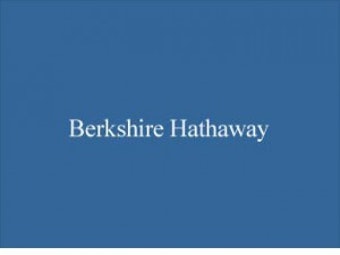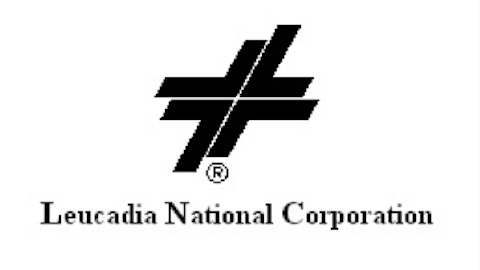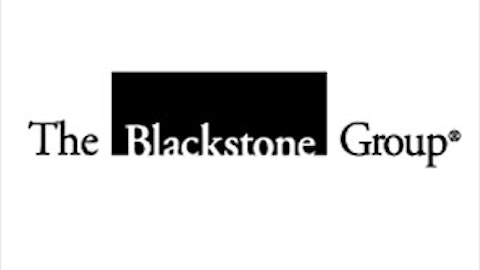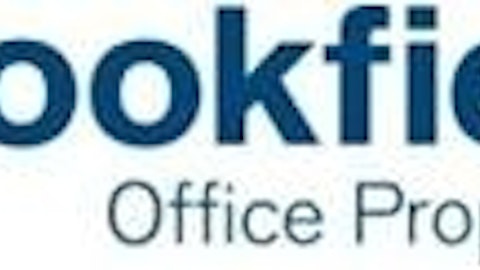Editor’s Note: A previous version of this post stated that Leucadia had an interest in Fortescue Metals Group and Inmet Mining. This has been corrected.
Leucadia National Corp. (NYSE:LUK) has often been called a baby Berkshire Hathaway Inc. (NYSE:BRK.B). It does have many similarities to Berkshire Hathaway Inc. (NYSE:BRK.B) and even has a 50-50 joint venture with them in the Berkadia Commercial Mortgage company. But where do the similarities end?

They are both diversified holding companies; they both have veteran investors as Chairmen, Ian Cumming and Warren Buffett. Both Buffett and Cumming write interesting, insightful and even entertaining Letters to Shareholders. Sometimes Cumming’s letters are laugh out loud funny.
Unlike Berkshire Hathaway Inc. (NYSE:BRK.B), Leucadia National Corp. (NYSE:LUK) is quite volatile as you can see from the chart, yet has outperformed Berkshire Hathaway Inc. (NYSE:BRK.B) and the overall market. But when it goes down, it really goes down.
In one of those inimitable Letters to Shareholders, Cumming explains 2008, “In 2008, Leucadia reported a loss of $2,535,425,000 after tax, which is $11.00 per share fully diluted. In 1992, following a fire in Windsor Castle and marital problems for most of her children, the Queen of England in a speech marking the 40th anniversary of her Accession referred to the past year as ‘annus horribilis.’ 2008 was just such a year.”
BRK.B Total Return Price data by YCharts
Since that “annus horribilis,” Leucadia has turned things around, increasing EPS from $0.10 in 2011 to $3.49 in 2012. With first quarter EPS of $1.10 it looks like they’ll top 2012. Total revenue for 2012 came in at $7.15 billion. At the end of the first quarter in 2013 it’s on track to surpass 2012 with revenue so far of $2.14 billion.
Leucadia offers a yield of 1.00% at a 12% payout ratio. (Berkshire has no yield) and has a five star CAPS rating. So does Berkshire Hathaway Inc. (NYSE:BRK.B). There the similarity ends. Leucadia has one-twentieth the market cap of Berkshire Hathaway Inc. (NYSE:BRK.B) at $9 billion to $262 billion. And Leucadia has a much smaller trailing P/E at 9.93 to Berkshire’s 16.75.
Leucadia, like Berkshire, has big hedge fund adherents; Bruce Berkowitz of Fairholme has been holding and adding to Leucadia for a 5.15% stake in Leucadia. Keynote speaker Whitney Tilson again recommended Berkshire as a buy at the Value Investing Congress.
One reason hedge funds like both are their huge insider holds. Leucadia Chairman Cumming owns 18,726,054 shares and CEO Richard Handler owns 11,184,168 shares. Warren Buffett owns 26,675,175 shares of the Berkshire A stock.
Another reason to like Leucadia is it is still trading below book as it has since 2011. Meanwhile, Berkshire is trading significantly above book with Berkshire A shares closing above $168,000 on June 21 with book at $120,505.
Leucadia’s many disparate interests bear mentioning: Oregon Liquified Natural gas, Leucadia Energy-Gasification, Garcadia (car dealerships), Conwed Plastics, Sangart (biotech), Idaho Timber, Keen Energy Services, Premier Entertainment (which owns the Hard Rock Hotel & Casino in Biloxi, MS), and National Beef.
Leucadia also owns Jefferies Group LLC (NYSE:JEF), the investment bank and securities firm, as well as some scattered real estate holdings and earlier this year bought Hendricks & Co., an investment bank specializing in multi-family real estate.
Several of Leucadia’s investments were considered contrarian, especially timber, copper, and mortgage financing, especially mortgage financing in 2009, but these were great illustrations of buying when others are fearful, the famed adage of Leucadia’s Berkadia partner Warren Buffett.
While Berkshire is involved primarily with insurance, it also owns retail, utilities, rails, and finance. Since Berkshire owns so many companies I am only providing a link to its holdings. It doesn’t mention Oriental Trading Co. or Heinz which closed recently.
Leucadia runs a similar opportunistic business model. Cumming wrote in the 2011 shareholder letter,” We employ leverage in a careful way and do not intend to fall into the traps of employing too much leverage or borrowing short term and investing long. We will leave that silliness to the hedge funds.”
In the 2008 letter Cumming wrote, “While always maintaining at least $500 million in cash or liquid assets… we will continue to look for companies to buy, but only consider companies that earn money, have a bright future and are durable!”
Here’s what Warren wrote in the 2011 shareholder letter,” We customarily keep at least $20 billion on hand so that we can both withstand unprecedented insurance losses …and quickly seize acquisition or investment opportunities.” This has worked well for Buffett as he’s been able to hone in on big deals like Heinz or the $34 billion purchase of Burlington Northern Santa Fe, LLC (NYSE:BNI) in 2009.
Their competition
Leucadia and Berkshire’s competition is The Blackstone Group L.P. (NYSE:BX). Blackstone is an alternative asset manager and operates in five segments: real estate, credit, hedge fund solutions, private equity, and financial advisory. Recent deals include Motel 6, Vivint (number 2 in US home security and home automation), the purchase of Capital Trust’s asset management platform, and several new funds.
The Blackstone Group L.P. (NYSE:BX)’s market cap is $11.4 billion. Although larger than Leucadia it has a much higher trailing P/E of 34.55 but offers a yield of 4.5%. Blackstone trades at twice book value but its PEG is only .56 compared to Berkshire’s PEG of 3.44.
Both Buffett and Cumming believe in keeping a low profile; Buffett lives in the same Omaha home he bought decades ago. This is in sharp contrast to Blackstone CEO Steven Schwarzman’s style who before Blackstone went public and the financial crisis lived a Gilded Age lifestyle.
Blackstone has brought many companies back from the dead and then taken them public, making pots of money. Pinnacle Foods Inc (NYSE:PF) which debuted a few months ago and chemical company Celanese Corporation (NYSE:CE) which Blackstone bought in 2004 at a discount and took public in 2005 at a profit are only two examples.
Blackstone’s assets under management ballooned by almost a third to $205 billion from 2011 and analysts expect a 30% rise in EPS from $1.63 in FY 2012 to $2.13 for FY2013.
Buy baby Berkshire, Blackstone or just Berkshire?
I’ll never tell you not to buy Berkshire but if you want a low P/E, diversified holding company like Berkshire earlier in its trajectory, Leucadia’s your baby. Blackstone’s P/E is just too high and its business model is less like Berkshire if that’s what you’re aiming for. Or just buy Berkshire but wait for a pullback.
The article Is This a Baby Berkshire or Not? originally appeared on Fool.com.
AnnaLisa Kraft has no position in any stocks mentioned. The Motley Fool recommends Berkshire Hathaway. The Motley Fool owns shares of Berkshire Hathaway. AnnaLisa is a member of The Motley Fool Blog Network — entries represent the personal opinion of the blogger and are not formally edited.
Copyright © 1995 – 2013 The Motley Fool, LLC. All rights reserved. The Motley Fool has a disclosure policy.




